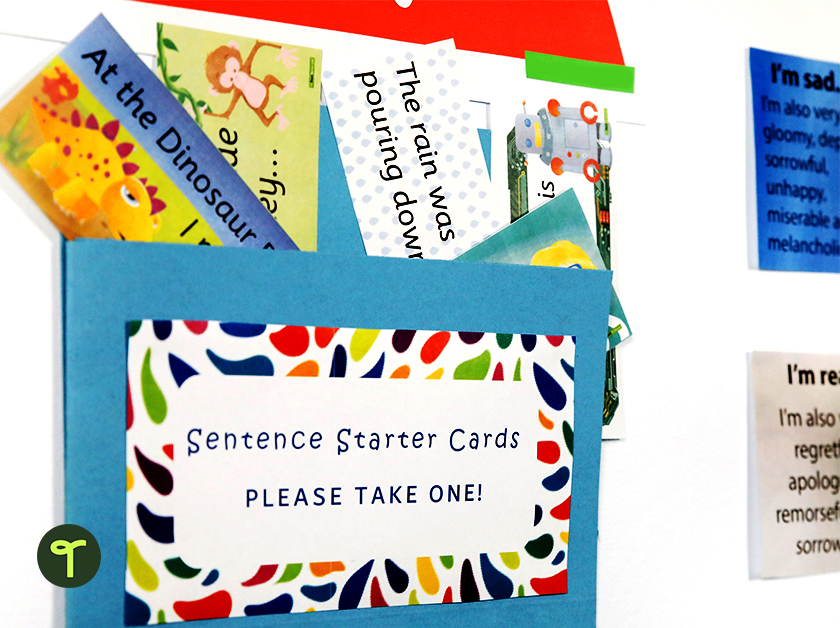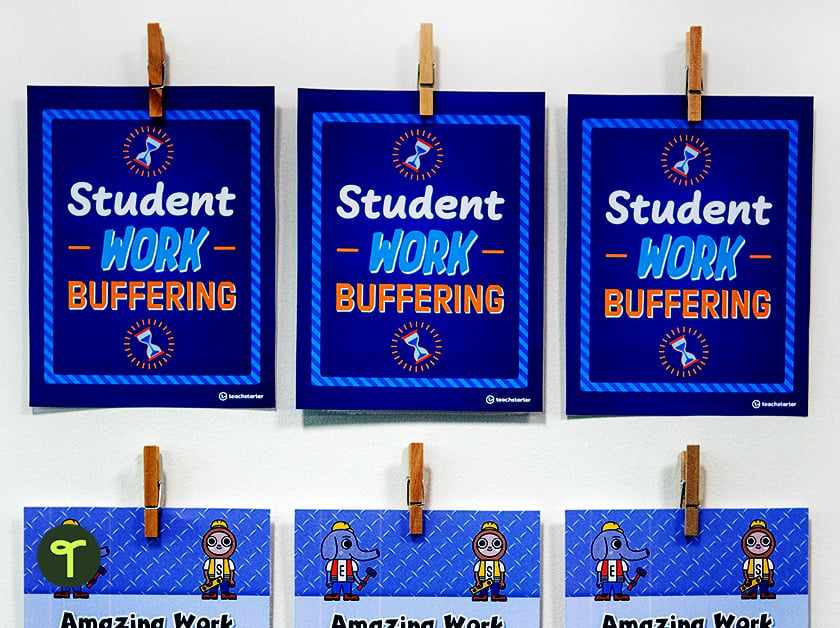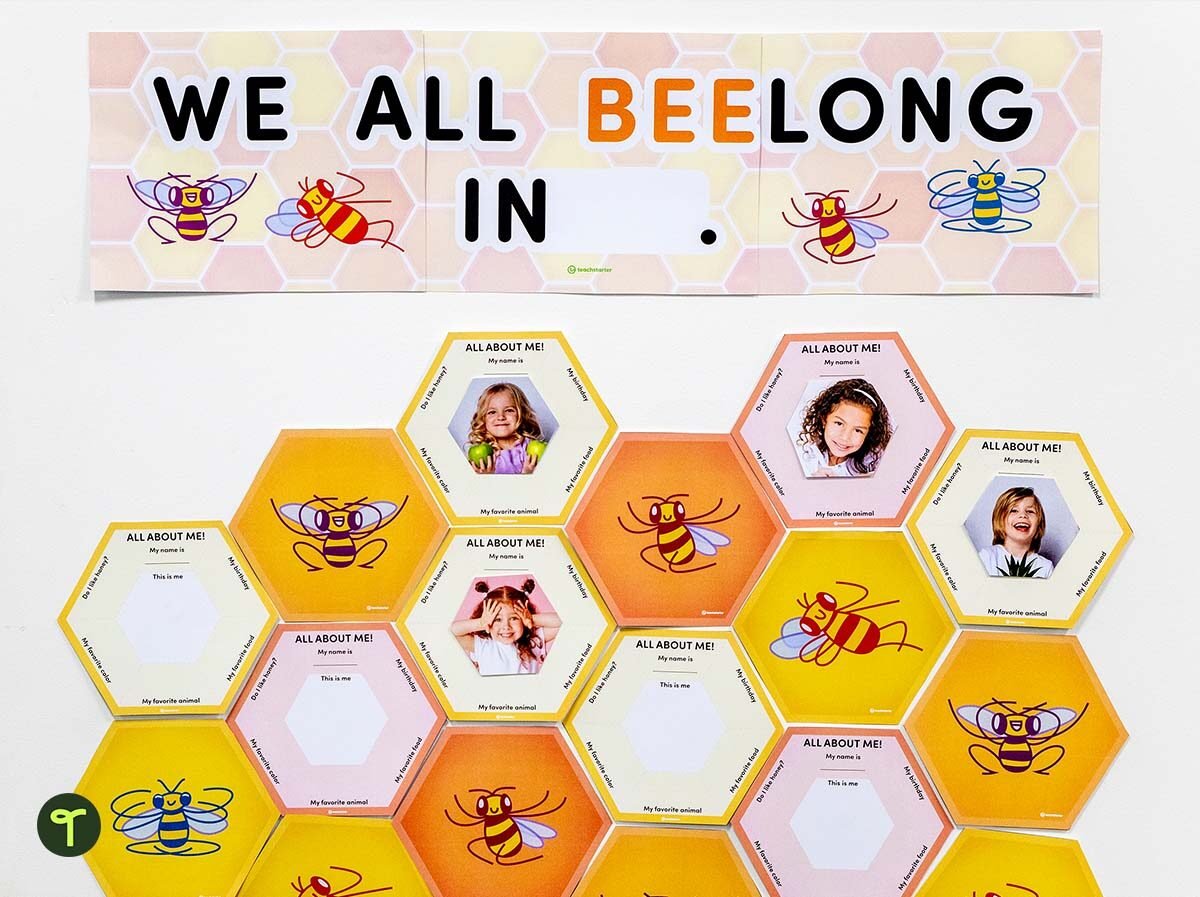It’s true, creating amazing classroom bulletin boards can be time-consuming. Cutting out all those letters is a task that can make your hands ache just thinking about it, and what do you actually put on a bulletin board? Is it just some paper letters and pictures, or is there more to it?
Whether you’re new to teaching and tackling your first bulletin board projects, or you’re a veteran who could use some fresh ideas, let’s talk bulletin boards — from the easy ideas to the informational displays that are packed with juicy knowledge, the teachers who create all the printable worksheets and digital activities here at Teach Starter (yup, they create all our bulletin board kits too!), have put their heads together to share some of our favorite tips to help you decorate a bulletin board (or several) that have real impact.
Why Do We Need Bulletin Boards?
If you’ve walked into a classroom with a slew of bulletin boards to decorate, plus a board outside in the hallway that is your responsibility, it can be awfully tempting to say bulletin boards are a waste of time. Not so fast! There really is value in spending some time creating bulletin boards to support visible learning in your classroom. Let’s consider a few of the benefits that can slip through when we’re in the middle of cutting out All. Those. Letters.
- They’re a great way to showcase students’ work so they can feel their efforts are being valued.
- They allow you to put some of your own personality on display, truly making your classroom feel like a home — for you and your students.
- Just like a good word wall or anchor chart, a bulletin board is a perfect place to display information in a visual way that engages different types of learners.
- Bulletin boards can incorporate an interactive element, providing students with hands-on learning opportunities.
As teachers ourselves, we know just how much work it takes to set up your classroom and set up amazing bulletin boards, so we’ve got a list of 10 simple techniques you can use to save serious time — and still produce something that looks good!
Simple Classroom Bulletin Board Ideas
Small Pockets
Use small folders, envelopes, or packets to make photocopies of information, checklists, writing prompts, or task cards easily available to your students. This can make it a bulletin board AND a classroom organization tool in one.

Student Work
This is about as simple as it gets when it comes to setting up a bulletin board in your classroom — and it’s extremely effective when it comes to establishing a warm and inviting classroom environment. Set up one of your bulletin boards specifically for student work, and change out the featured project on a weekly, monthly, or quarterly basis — the frequency is up to you. At the start of the year, you can glue small tacks to the backs of clothespins, then set them up on your bulletin board with “student work coming” placeholders so your class knows you’ve got a special place that’s all about showing off their accomplishments.
(Print student work coming and other placeholders here!)
Wrapping Paper Bulletin Board Backgrounds
Wondering where to buy bulletin board paper? Skip the expense this year, and go for an easy option — use wrapping paper as a cheap and effective way to create a background for your display. You can find plenty at the dollar store, and you won’t have to worry if it gets damaged. Just grab another roll for next to nothing!
Student Photos or Avatars
This goes along with student work — after all, creating student ownership of the learning space is such an important part of a teacher’s job. Simple things like incorporating student photos or customized student avatars into a classroom bulletin board display is a wonderful way of fostering this ownership, and it’s a board you can keep up all year long.
You can take it one step further by incorporating your first day of school “all about me” activity with this printable template!
Picture Frames on Bulletin Boards
Lightweight picture frames are another simple but effective way to highlight important information, pictures, and ideas. You can easily stick these up using picture-hanging strips.
File Folders with Prongs
These file folders with fasteners are excellent for collecting and displaying student work on a bulletin board “art gallery.” At the end of the year (or when it’s time to change out the board), you can send the file folder home in their backpacks!
Classroom Rules
Bulletin boards are great focal points to share information, and that doesn’t just have to be curriculum-based! Make your informational bulletin board the place to share classroom rules and procedures in an easy-to-see spot for everyone in the classroom.
Print a ready-made Voice Level Bulletin Board display to add to your classroom!
Clothespins and Clipboards
Another simple and affordable idea that has a great visual impact is to display information or student work on your bulletin board using clothespins or on a clothespin line.
Clipboards can be used as a means to visually separate some of the more important information in a display. For older students who have the fine motor skills to manage it, you can also use clipboards to store checklists or photocopies that students need to access, making your board an organizational hub.
Hang Shoebox Diorama on a Bulletin Board
This is a really fun idea and one that you can get your students involved in. If it suits the purpose of your bulletin board, use shoeboxes attached with picture hanging strips to present information on your bulletin board in 3-D.

Shoebox dioramas are a fun way for students to show their learning and make a great 3D classroom display! (The Third Grade Teaching Spot via Pinterest)
Sticky Notes
Turn your bulletin board into a sticky note parking lot for collaboration and other ideas! Bulletin boards with sticky notes can include ones where students write on the notes and stick them up (such as a fun brainstorming display activity). Or they can be used to cover information, ideas, or classroom rewards that are revealed by pulling the sticky notes off.
Yarn, String, or Ribbon
Use yarn, string or ribbon, and thumbtacks to connect ideas in a classroom display. This is great for when you have a topic that is comprised of a few different elements or sections and is great for visual learners.









Comments